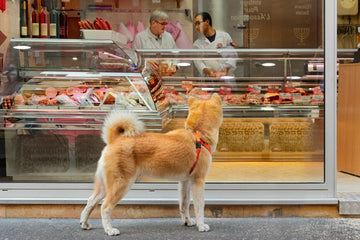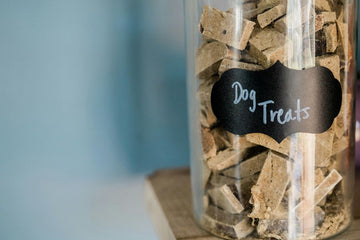Keeping your dog’s treats fresh and safe is just as important as choosing the right ones in the first place. Whether you make homemade goodies or buy them from the store, proper storage ensures their flavor, texture, and nutritional value remain intact. It also prevents spoilage, so your furry friend can enjoy their treats safely. Here’s a guide to the best practices for storing dog treats to keep them fresh and delicious.
1. Understand the Type of Treat You’re Storing
Different types of dog treats have unique shelf lives and storage needs. Knowing what kind of treat you’re dealing with will help you determine the best way to store it.
- Dry or Hard Treats: Biscuits, jerky, and bones generally have a longer shelf life. These treats are less prone to moisture-related issues and can often be stored in a cool, dry area for several weeks if kept in airtight containers.
- Soft or Moist Treats: These treats have higher moisture content, making them more susceptible to mold and bacteria. They require careful storage to avoid spoilage, often needing refrigeration or consumption within a shorter period.
- Homemade Treats: Homemade treats typically lack preservatives, so they spoil faster than store-bought options. Depending on the ingredients, these treats may require refrigeration or freezing for extended storage.
2. Use the Right Containers
The key to maintaining freshness is protecting the treats from air, moisture, and heat. Choosing the right storage container can make all the difference.
- Airtight Containers: These are essential for keeping treats fresh. Look for containers with tight-fitting lids to keep air out. Glass jars, plastic containers, or resealable bags work well for dry treats, while vacuum-sealed bags or heavy-duty plastic containers are ideal for moist treats.
- Pet-Specific Containers: Some stores offer specially designed treat containers made from food-grade materials. These are a great option for pet owners who want to ensure their dog’s treats stay safe and fresh.
- Avoid Long-Term Storage in Plastic Bags: While plastic bags are convenient for short-term use, they’re less effective for long-term storage. Instead, opt for containers with better seals to prevent the treats from going stale.
3. Store at the Right Temperature
Temperature plays a critical role in preserving the freshness of dog treats. The general rule is to store them in a cool, dry place to avoid spoilage.
- Room Temperature: Dry treats like biscuits or jerky can be safely stored in a pantry or cupboard, away from heat sources or areas with fluctuating temperatures (like near a stove or window).
- Refrigeration: Soft and moist treats should typically be stored in the fridge to prevent bacterial growth. Use airtight containers or resealable bags to retain freshness, and check the packaging for specific storage instructions. These treats are best used within one to two weeks of opening.
- Freezing: For long-term storage, especially for homemade or bulk soft treats, freezing is an excellent option. Store them in airtight containers or freezer bags, and label them with the date for easy tracking. Defrost frozen treats in the fridge before serving to maintain their texture and quality.
4. Protect Treats from Light and Humidity
Light and humidity can quickly degrade the quality of dog treats, leading to spoilage and reduced flavor.
- Keep Away from Light: Direct sunlight can break down nutrients and alter the flavor of treats. Store them in dark, cool spaces like cupboards or pantry shelves to maintain their shelf life.
- Control Humidity: Moisture in the air can encourage mold growth, especially for soft treats. Use airtight containers to minimize exposure to humidity. If you live in a humid climate, consider adding a small silica gel packet to the container to absorb excess moisture (just ensure it’s pet-safe and kept away from your dog).
5. Check Expiration Dates and Rotate Treats
No matter how well you store your dog’s treats, it’s essential to monitor expiration dates and regularly rotate your stock.
- Follow Expiration Dates: Treats have a finite shelf life, and consuming expired treats can pose health risks or reduce nutritional value. Always check the packaging for expiration dates.
- First In, First Out: If you buy treats in bulk, use the oldest ones first to prevent waste. This is especially important for homemade treats, which spoil more quickly without preservatives.
- Inspect for Freshness: Periodically check your treats for signs of spoilage, such as discoloration, foul odors, or changes in texture. If they look or smell off, discard them immediately.
Conclusion
Proper storage is essential to keep your dog’s treats fresh, flavorful, and safe. By understanding the type of treats you’re storing, using airtight containers, maintaining the right temperature, and protecting them from light and humidity, you can significantly extend their shelf life. Regularly checking expiration dates and rotating your stock ensures your pup enjoys their treats at their best. With these simple tips, you’ll always have a tasty, fresh reward ready for your furry friend—because they deserve nothing less than the best!




